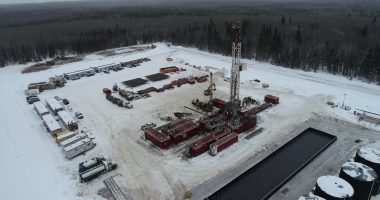A Canadian green hydrogen group established in North America, Charbone Hydrogen, is on a mission. The Canadian hydrogen group is positioning itself as a major player in the decarbonization of our planet. The group is fully committed to the energy transition and the drive to achieve global carbon neutrality by 2050 by supplying green dihydrogen produced from clean and renewable energy sources.
TMH: The name Charbone has been purposefully created – can you start by telling me the details behind the creation of the name and what Charbone does?
DC: The name Charbone came from the French word for coal. French for coal is Charbon without the “E.” The “H” is there on purpose because it represents the Hydrogen itself, carbon-free hydrogen, the hydropower, which is carbon-free renewable power baseload, as well as the human part, representing all the humans working at Charbone and on the planet as well. So, the name really represents a carbon-free planet, and Charbone was nice to be pronounced in French and English for us. Charbone is a green hydrogen producer focusing on a modular and scalable approach. Breaking the chicken and egg situation, where there is no user, no producer, trying to de-risk all the projects by providing the existing market with a green hydrogen alternative.
TMH: For those who are unaware, what is green hydrogen and its advantages to its current counterpart grey hydrogen?
DC: Green hydrogen is produced by electrolysis using water and use of electricity produced from renewable power. Charbone’s management has 25 years of experience in renewable energy, primarily wind and solar, which are variable and intermittent – the reason why we selected it to be always connected to the network and to the grid, with a base load such as hydropower plants. Green hydrogen is the opposite of grey. Grey is produced by splitting the molecules of natural gas. Each time that you are consuming energy to heat up that molecule and splitting and releasing it into the atmosphere. About 10 kilograms of Greenhouse Gases for one kilogram of hydrogen. It is a highly polluting way of producing hydrogen. While it’s cheap, we understand, but as we decarbonize our industrial processes, we do believe that green hydrogen has to play into it.
TMH: Break down your strategy to develop modular and expandable hydrogen facilities and regional hubs.
DC: Charbone has been highly opportunistic right now, to select areas where the renewable available power on the grid was cheap and available, as we discover more and more in North America that transmission and distribution have not been upgraded. They may not be all the renewable power needed, all the time, in the different areas. Our approach is “small is beautiful.” Locating the facility where we have the opportunity to have low-cost power generated by renewable producers and never very far away from actual industrial users of hydrogen. The initial idea when we started Charbone three years ago was to migrate those actual industrial users of grey hydrogen, migrate them to green hydrogen first and get prepared for the medium and personal mobility as it’s coming. More and more we are seeing Toyota, Hyundai, Ford announcing technology using hydrogen, whether it is a fuel cell or internal combustion engine
TMH: And how is the construction progressing on the company’s Phase I Green Hydrogen Facility in Quebec?
DC: The construction is going well. Actually, last year we did prepare the complete project and right now Hydro Quebec is about to install the poles to bring renewable power to the site and we are getting ready to start construction. All the components are ready at the major supplier, the electrolyser is ready for shipment, compressors are ready. We just received the industrial cylinders two weeks ago. They are now in storage getting ready to fill them with hydrogen and deliver it to the customers.
TMH: Tell us about some of the other key projects for Charbone in Canada and the U.S.
DC: I should complete my update on the facility – we aim to be producing the first kilogram of hydrogen before the end of the summer, so that should be within the next 12 to 14 weeks. That’s great news. For an update on all the other projects, Charbone, in the short term, is planning to build four projects in Canada. The first one is the Sorel-Tracy (QC) project, and the second one would be Selkirk, Manitoba (already announced). The third one is actually the Port Hawkesbury project in Nova Scotia, and we are looking for a fourth one that could be in Ontario or it could be Alberta. Right now, in the U.S., we are overlooking eight positions which could be Wisconsin, Indiana, Michigan, New York, certainly California and probably Texas, and other states that we cannot name for now. In the short term, between the next 24, 36 months, Charbone would like to own and operate at least 12 sites across North America, and with of course, the agreement that we signed a year ago with Superior Plus to distribute all our hydrogen across North America, which makes Charbone the only independent green hydrogen producer with enough takers in North America.
TMH: Is there any other update which you would like to share with our investors today?
DC: We did announce the hydropower acquisition in Michigan two days ago, which should be occurring from now to August. Charbone has actually had revenue from the Wisconsin project since December 2022. We aim to start receiving revenue from the production of green hydrogen, as I said earlier, starting at the end of summer from the Sorel-Tracy plant, and we should be as well restarting the hydropower project in Vermont within the next couple of months.
Head over to charbone.com for all the ins and outs of the company. You can also find them on the TSXV; under the ticker symbol CH.
Learn more about Charbone Hydrogen.
This is sponsored content issued on behalf of Charbone Hydrogen, please see the full disclaimer here.




